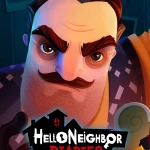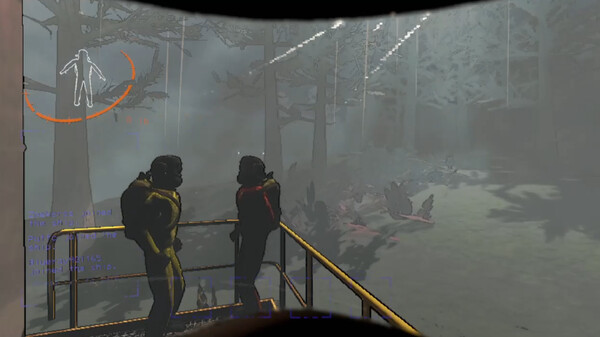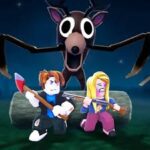Roblox - 99 Nights in the Forest: A Slow-Burn Descent into the Unknown
A Forest Where Time Sleeps and Darkness Watches
Roblox, long known for its vibrant sandbox of creativity, has lately seen a surge in horror and mystery experiences that push the platform’s boundaries. Among these, "99 Nights in the Forest" is a standout — not for spectacle, but for restraint. It doesn’t scream to be noticed; it lingers in the shadows, waiting for players to notice something... off.
This game isn’t your usual Roblox fare. It’s not a jumpscare carnival, nor a survival-crafting cliché. Instead, it's an eerie meditation on time, isolation, and the kind of horror that doesn’t leap at you — it waits. You arrive in a forest where something ancient breathes beneath the soil, and from the first night, the game whispers: you are not welcome here.
The Premise: 99 Nights, One Rule — Survive, or Don’t
There is no tutorial. No clear objective. You awaken in a remote forest with only a modest tent, a flickering campfire, and a pocket watch that ticks far too loud in the silence. The premise is deceptively simple: endure 99 nights in this forest. But what that entails is anything but straightforward.
As the days pass, strange anomalies begin to occur — not with flair, but with subtle dread. One night, a shadow crosses your camp. Another, the trees seem... closer. It's in this ambiguity that "99 Nights in the Forest" excels. It turns routine into paranoia and silence into sound.
Atmosphere: Stillness That Suffocates
From a design perspective, the game is a masterclass in slow-burn horror. The forest isn’t grotesque or filled with screaming monsters. It's beautiful, hauntingly so. Mist clings to the roots of trees like memory. Birds fall silent too early. The wind whistles melodies that don’t belong to nature.
Each night brings a new tone. Sometimes it's dread. Sometimes nostalgia. Occasionally, it’s calm — a calm so absolute it feels unnatural.
Lighting plays a vital role. Your lantern is never bright enough. The moon shifts in shape but never feels consistent. And the darkness? It’s not just black. It’s alive.
Narrative Design: Lore Through Absence
"99 Nights in the Forest" doesn’t hand you a story. It buries it. Deep.
There are hints — a burned notebook under a rock, strange symbols carved into tree bark, an abandoned chapel with bloodless walls. But nothing ever connects easily. Every clue leads to more questions. Who lived here before? What happened to the previous camper? Why does the moon phase reset every seven nights?
Players begin to construct their own theories. Is the forest cursed? Are you trapped in a time loop? Is the forest even real?
The game weaponizes not knowing. It builds dread not from what you see, but what you might.
Gameplay Mechanics: Minimal but Meaningful
Survival here isn’t about crafting or base-building. Instead, you manage time, perception, and presence. During the day, you gather items: extra firewood, strange trinkets, rotting photographs. At night, you endure.
Mechanics are deliberately limited. There’s no combat. No skill trees. No stats. This minimalism is not a lack of content, but a design choice — one that directs attention inward. The game asks: What do you fear when you can't fight back? What do you notice when there’s nothing to do but watch?
Small changes matter. One night, your watch ticks faster. Another, your reflection in the water doesn’t move when you do. There’s a mechanic tied to trusting your senses, and that mechanic... lies.
Sound Design: Where the Real Terror Lives
The true horror of "99 Nights in the Forest" might be its audio. There's almost no music. Just ambient noise — and even that is suspect.
Owls hoot in strange rhythms. Your breathing becomes irregular as the nights go on. At night 31, a new sound emerges: something dragging through leaves. You chase it. You find nothing.
On night 46, the wind whispers your name.
Each sound is handcrafted not just to scare, but to create doubt. Did you really hear that? Or is the forest inside your mind now?
Progression: When Time is the Enemy
The titular 99 nights are not linear. Some nights pass normally. Others stretch into eternity. A few repeat, seemingly identical, yet slightly altered.
There’s no level-up moment. No achievement pop-ups. The game denies traditional gratification loops, replacing them with a growing sense of unease. The forest learns. It adapts.
On night 70, a door appears in the middle of the woods. No explanation. No handle. It disappears the next morning.
And then you wonder: was it ever there?
Visual Storytelling: Horror Without Gore
The brilliance of "99 Nights in the Forest" lies in its restraint. There’s very little blood. No grotesque monsters. Nothing chasing you with claws. But the visual world tells a darker story.
A tree appears to be growing into a deer. A broken mirror reflects someone else's tent. One night, stars are missing from the sky — just a blank void where constellations used to be.
The environment morphs subtly. Rocks shift positions. A statue appears near your camp — then vanishes. A scarecrow with your face replaces your firewood pile on night 55. By then, you’re no longer shocked. Just… tired. The game uses psychological horror so effectively that jump scares would feel vulgar by comparison.
Social Mechanics: Alone, Together
Despite being multiplayer-enabled, the game rarely encourages interaction. You and a few others may spawn near each other, but no voice chat, no nametags, no safe zones. Just presence.
You may see someone across the river — or think you did.
There’s a strange social mechanic where, if you interact with others too much, the forest becomes "aware." Trees rearrange, nights last longer, familiar paths become impossible to retrace.
On night 88, a player appeared in someone’s campfire reflection — but wasn’t actually there.
That’s how "99 Nights in the Forest" handles multiplayer: not as a comfort, but as another tool for disquiet.
Themes and Symbolism: More Than Just Scares
Beyond horror, the game is about memory, decay, and acceptance. It challenges the player to sit with discomfort — not to escape it.
Many players report emotional reactions. Some see the forest as a metaphor for grief. Others interpret the 99 nights as stages of depression. Some even describe it as a test of personal introspection.
Symbols recur — eyes, circles, hands reaching from roots. The number 99 itself is a question: why not 100?
There’s a growing theory in the community that you’re not surviving the forest. You’re becoming it.
Endings: If You Can Call Them That
Reaching night 99 doesn’t end the game. It transforms it.
Some players report waking up on night 1 again — but everything is wrong. The sun rises from the west. Your tent is made of flesh. You find a note in your pocket that you don’t remember writing.
Others find a new area: a tower of clocks that run backward. Inside: a mirror. When you look in, the game crashes.
These fragmented endings add to the mystery. Are there multiple outcomes? Does the game respond to your behavior over time? Is the forest a living entity deciding your fate?
Community Theories: The Game Beyond the Game
Because so little is explained, the game has spawned one of the most active theory-building communities in the Roblox horror genre.
Some believe the game changes depending on the lunar calendar in real life. Others track night-specific anomalies and their frequency. A few even believe there’s a hidden language embedded in the forest’s layout — a cipher waiting to be cracked.
There are dozens of YouTube videos dedicated to unraveling just one night’s mystery. Theories range from Lovecraftian beings to ancient forest cults to cosmic loops.
Whether any of it is true doesn’t matter. The mystery is the point.
Artistic Merit: A New Genre of Roblox Horror
What makes "99 Nights in the Forest" important isn’t just that it’s scary. It’s that it uses the Roblox platform to explore emotional horror in ways rarely attempted.
It doesn’t just simulate fear. It studies it. It doesn’t entertain so much as unsettle — and in doing so, elevates itself above most of what the platform usually offers.
This is experiential horror. Existential horror. The kind of horror that changes you slightly if you let it.
When the Forest Becomes a Mirror
"99 Nights in the Forest" is not about surviving a forest. It's about living with one — in silence, in doubt, in wonder. It’s a psychological labyrinth disguised as a Roblox game. And whether players last 9 nights or all 99, one thing is certain:
The forest remembers them.
The question is… will they remember the forest?



























